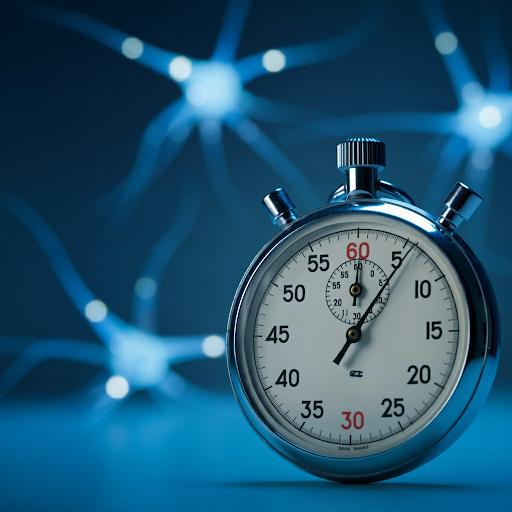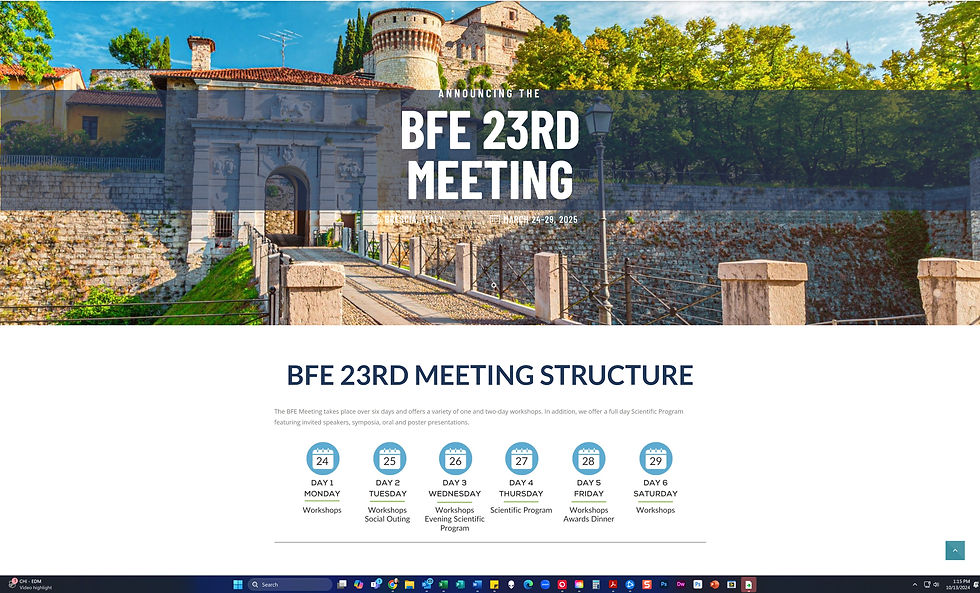
This case report by Turner et al. (2023) details the treatment of a young female with intractable temporal lobe epilepsy (TLE), using an extensive regimen of neurofeedback (NFB) and complementary therapies.
Temporal Lobe Epilepsy History
Initially diagnosed with attention-deficit/hyperactivity disorder (ADHD) and treated with neurofeedback at 8, she began experiencing progressive cognitive and emotional difficulties. By age 13, the patient had developed full-blown TLE symptoms, experiencing approximately 120 seizures daily, some severe enough to stop her heart and lungs. Despite hospitalization and a regimen of antiseizure medications, her symptoms persisted, highlighting the severe and unmanageable nature of her epilepsy. This report presents a comprehensive alternative approach, using personalized neurofeedback guided by EEG and adjunctive therapies, to address the limitations of traditional antiseizure treatments.
Conventional treatments for epilepsy initially offered limited success. While the patient was administered high doses of medications, including lacosamide and levetiracetam, these brought her seizure count down to about 90 episodes daily, still far from manageable. These antiseizure medications induced heavy sedation, limiting her ability to engage in daily activities and undermining her quality of life.
Neurofeedback Interventions
Her caregivers, concerned by the ineffectiveness and adverse effects of these drugs, explored alternative approaches, initiating neurofeedback sessions targeting seizure control and symptom management. This decision marked a pivotal shift in her treatment, moving from purely pharmacological interventions to a combined model incorporating neurofeedback, cognitive skills training, and dietary changes.
Neurofeedback was introduced with a focus on training her sensorimotor rhythm (SMR) to reduce seizure frequency. Initial NFB protocols targeted regions such as F3/F4, aiming to suppress both slow (1–5 Hz) and fast beta (21–30 Hz) activities. However, these initial interventions yielded limited improvement, prompting adjustments to her protocol. International 10-20 System graphic by minaanandag.

Eventually, training was refocused to enhance SMR over T5-Cz, a region associated with seizure activity control in temporal lobe epilepsy. With guidance from specialists, training was adjusted repeatedly, leading to gradual improvements as the seizure frequency decreased over time. The patient’s journey illustrates how neurofeedback’s iterative adjustments, based on EEG analysis, allowed more precise targeting of abnormal brain wave patterns.
Supplementary Treatments
Supplementary treatments further supported her neurofeedback regimen, creating a multifaceted approach to managing epilepsy. Alongside NFB, her caregivers incorporated a low-glycemic diet, which appeared to reduce seizure severity. Other dietary supplements, including probiotics, cannabidiol (CBD), and fish oil, were tried but ultimately discontinued due to their minimal impact. Her caregivers also explored biofeedback techniques, such as heart rate variability (HRV) training and diaphragmatic breathing exercises, to manage her stress and reduce seizure triggers. These adjunctive therapies addressed the broader physiological and psychological stressors that could exacerbate her condition, enhancing her overall resilience and stress management skills.
Cognitive training played a vital role in her treatment, as mental skills coaching (MSC) was integrated to strengthen her self-regulation abilities. MSC involved techniques such as progressive relaxation, imagery, and cognitive restructuring, which she used to identify and respond to early signs of a seizure. This skill set was reinforced through neurofeedback and biofeedback, building her capacity to control her physiological responses under stress. Notably, this training enabled her to engage in her treatment actively, fostering a sense of empowerment and self-confidence. Her ability to respond to seizure precursors became a critical aspect of her management, as it allowed her to mitigate or shorten seizure episodes in real time.
Successful Clinical Outcomes
Over the course of 2 years, the patient’s progress was marked by a steady reduction in seizure frequency and intensity. By age 16, she experienced no drop seizures or abdominal pain auras, achieving a state of seizure control that had eluded her through previous treatments. Despite intense athletic activities and the mental stress associated with competitive sports, she excelled as an athlete, securing an elite ranking in her sport. EEG readings at this stage confirmed the absence of active epileptiform discharges, indicating a significant stabilization of her neurological condition. This achievement highlighted the effectiveness of a consistent, multifaceted treatment model, combining neurofeedback with complementary therapies, in managing intractable epilepsy.
Following this period of stability, the patient transitioned to a maintenance phase, where neurofeedback sessions were reduced to twice weekly to sustain her progress. Her EEGs, while occasionally showing minor abnormalities, indicated no seizure activity or paroxysmal discharges. This long-term management plan, centered on intermittent NFB, allowed her to maintain seizure control without medications. Her caregivers remained actively involved in her treatment, monitoring for any early signs of relapse and adjusting the neurofeedback parameters as needed. This case emphasizes the potential of home-based, professionally supervised neurofeedback as a viable approach for managing complex, treatment-resistant epilepsy.
Summary
The case underscores the role of a patient-centered, multidisciplinary approach in achieving outcomes that purely pharmacological methods could not provide. By integrating neurofeedback, cognitive training, dietary modifications, and biofeedback, this approach demonstrated a promising path for patients with intractable epilepsy. The patient's caregivers played an essential role, facilitating the continuity and consistency of her NFB sessions and adjusting treatment elements based on real-time EEG feedback and behavioral observations. This synergy between professional guidance, parental support, and patient involvement was instrumental in achieving long-term seizure remission and sustained neurological stability.
Glossary
abdominal aura: a type of aura experienced as an intense, often painful sensation in the abdomen, usually occurring as a precursor to seizures in temporal lobe epilepsy. It is thought to originate from deep brain structures, such as the insular cortex, that may influence visceral sensations.
cannabidiol (CBD): a non-psychoactive compound derived from cannabis plants, commonly used as a supplement to potentially reduce seizure frequency and severity. CBD is considered adjunctive in epilepsy treatment and has gained interest for its anti-inflammatory and neuroprotective effects.
clonic seizures: seizures characterized by rhythmic jerking movements of muscles.
drop seizures: sudden episodes of muscle control loss, causing the patient to fall.
epileptiform activity: abnormal brain wave patterns associated with seizure disorders.
F3/F4: EEG electrode sites in the 10-20 international placement system, located on the left (F3) and right (F4) frontal lobes. These sites are commonly targeted in neurofeedback to modify frontal lobe activity associated with attention, self-regulation, and emotional control.
heart rate variability (HRV): variation in the time interval between heartbeats, used as a biofeedback measure for stress regulation.
intractable epilepsy: epilepsy that does not respond to standard medical treatments.
mental skills coaching (MSC): techniques used to enhance cognitive and emotional control, particularly under stress.
paroxysmal discharges: sudden bursts of abnormal electrical activity in the brain associated with seizures.
sensorimotor rhythm (SMR): a brain wave frequency range associated with relaxed, focused states, targeted in neurofeedback for seizure reduction.
T5-Cz: a specific neurofeedback training site pairing the T5 electrode, positioned over the left temporal lobe, with the Cz electrode, located at the top center of the head (vertex). This site combination is often used in neurofeedback to target temporal lobe activity, particularly relevant in treating seizure activity in temporal lobe epilepsy.
temporal lobe epilepsy (TLE): a type of epilepsy originating in the temporal lobe, associated with symptoms such as memory disruptions and sensory changes.
Open Access Article
Turner, R. P., Wilson, V. E., Gunkelman, J. D., Harvison, A. A., & Walker, L. A. (2023). Intractable epilepsy controlled by neurofeedback and adjunctive treatments: A case report. NeuroRegulation, 10(1). https://doi.org/10.15540/nr.10.1.21

Support our Friends

Dr. Inna Khazan's BCIA Introduction to biofeedback workshop will be offered in two parts this year.
Part 1 is entirely virtual, consisting of 20 hours (over 5 days) of live online instruction, home-study materials distributed prior to the live workshop, and written instructions for practical lab work to be completed during the week of the workshop or after its completion. Part 1 fulfills BCIA requirements for introduction to biofeedback didactic. Part 1 will take place on Zoom, November 4 - 8, 2024, 12 - 4pm EDT. Tuition is $1395.
Part 2 is optional, and consists of 14 hours (over 2 days) of in-person hands-on practical training using state-of-the-art equipment, designed to help participants be better prepared to start working with clients. Part 2 will take place in Boston on November 11 & 12, 2024, 9am-5pm EDT. Tuition is $395. (Please note that an Introduction to Biofeedback didactic (taken at any previous time, anywhere) is a pre-requisite to the hands-on training).




Commenti